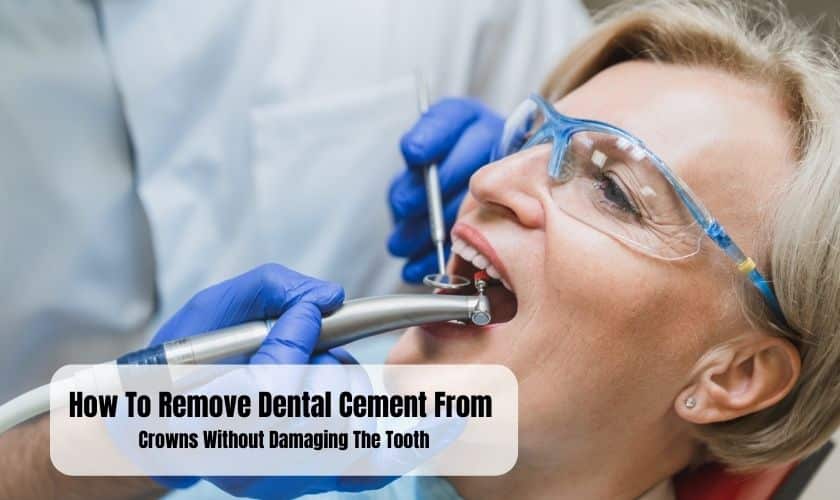Dental crowns are used to restore and protect teeth from further damage. However, if dental cement is left on the crown or gets stuck in between teeth, it can cause significant discomfort. Fortunately, there are ways to remove dental cement without damaging the tooth or crown. In this article, we will discuss how to remove dental cement from crowns without damaging the tooth.
Identifying Dental Cement on Your Crown
Types of Dental Cement
Dental cement is a type of adhesive used to hold crowns and other dental appliances in place. It comes in several varieties, including temporary, permanent, and zinc-oxide. Temporary dental cement is typically used to hold crowns in place while permanent dental cement can last up to two years or more. Zinc-oxide cement is the strongest type and is usually used on crowns in cases of extreme damage or decay.
Signs of Dental Cement
It’s important to be aware of the signs that indicate dental cement is present on your crown. The most common sign is a white, chalky substance around the crown or in between teeth where crowns meet. Other signs include an unpleasant taste in your mouth and discoloration of teeth near the crown.
When To Seek Professional Help
If you suspect dental cement is present on your crown, it’s best to seek professional help. A dentist or dental hygienist can safely identify and remove the material without damaging the crown or tooth.
Removing Dental Cement From Crowns Without Damaging The Tooth
Ways to Remove Dental Cement
The most common way to remove dental cement is with a dental pick or scaler. These tools are designed to safely remove plaque and tartar but can also be used to gently scrape away any excess material on crowns. Other methods include using a toothbrush, floss, or absorbent material such as cotton swabs to remove dental cement.
Things To Avoid
When removing dental cement, it’s important to avoid using sharp or abrasive tools. These can cause damage to crowns or teeth and should only be used with extreme caution. Additionally, you should never attempt to scrape away dental cement with your fingernails or other household objects.
Seeking Professional Help
If you’re uncomfortable or unable to remove dental cement on your own, it’s best to seek professional help. A dentist or dental hygienist can safely and effectively remove any excess material without damaging crowns or teeth.
Conclusion
Removing dental cement from crowns without damaging the tooth is possible with a few simple steps. First, identify any signs of dental cement present on crowns. Next, use a dental pick or scaler to gently remove any excess material. Finally, seek professional help if you’re uncomfortable attempting to remove it yourself.
FAQs
A: The most common sign of dental cement is a white, chalky substance around crowns or in between teeth. Other signs include an unpleasant taste in the mouth and discoloration of teeth near crowns.
A: The most common way to remove dental cement is with a dental pick or scaler. Other methods include using a toothbrush, floss, or cotton swabs to remove any excess material.
A: If you’re uncomfortable or unable to remove dental cement on your own, it’s best to seek professional help. A dentist or dental hygienist can safely and effectively remove any excess material without damaging crowns or teeth.





